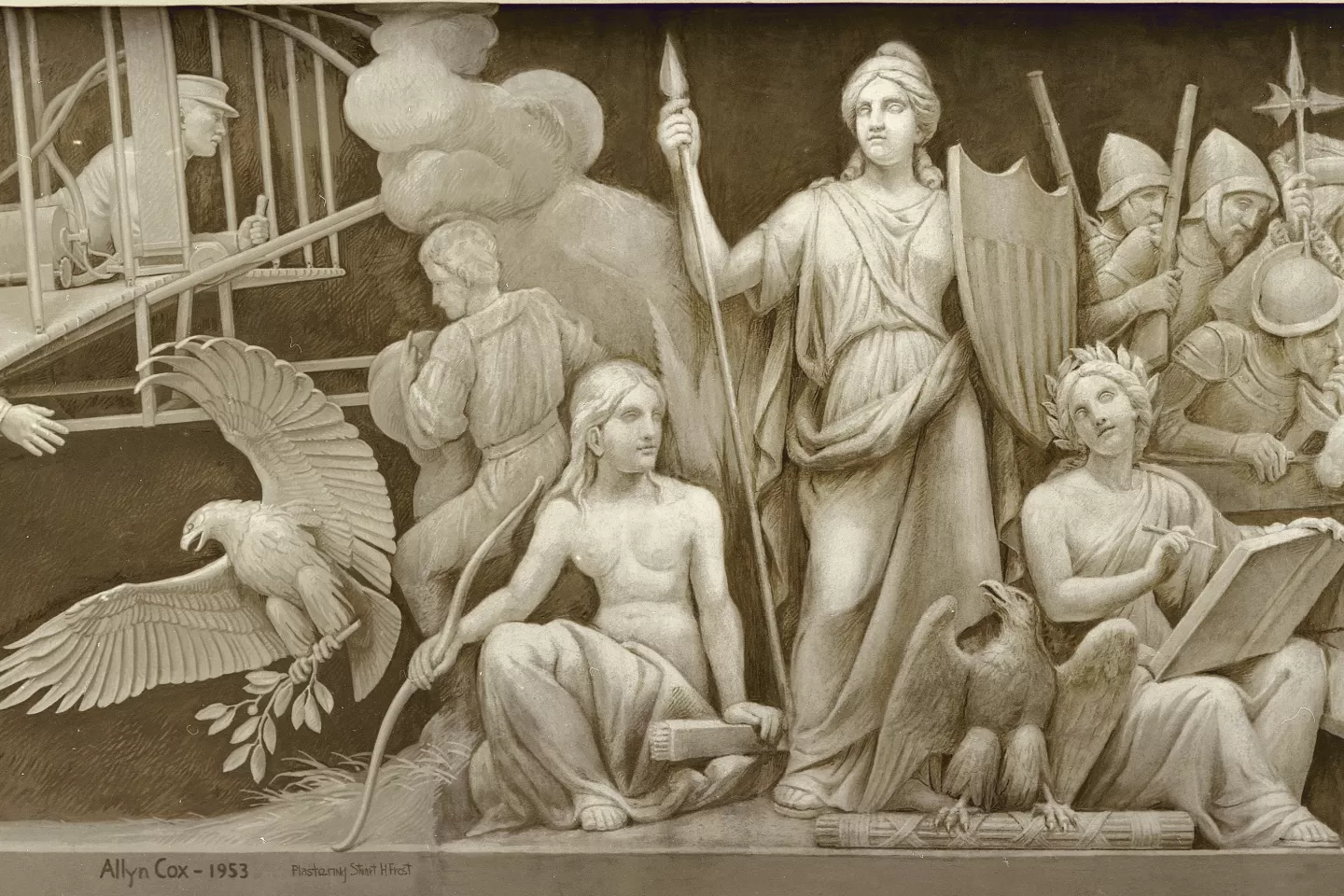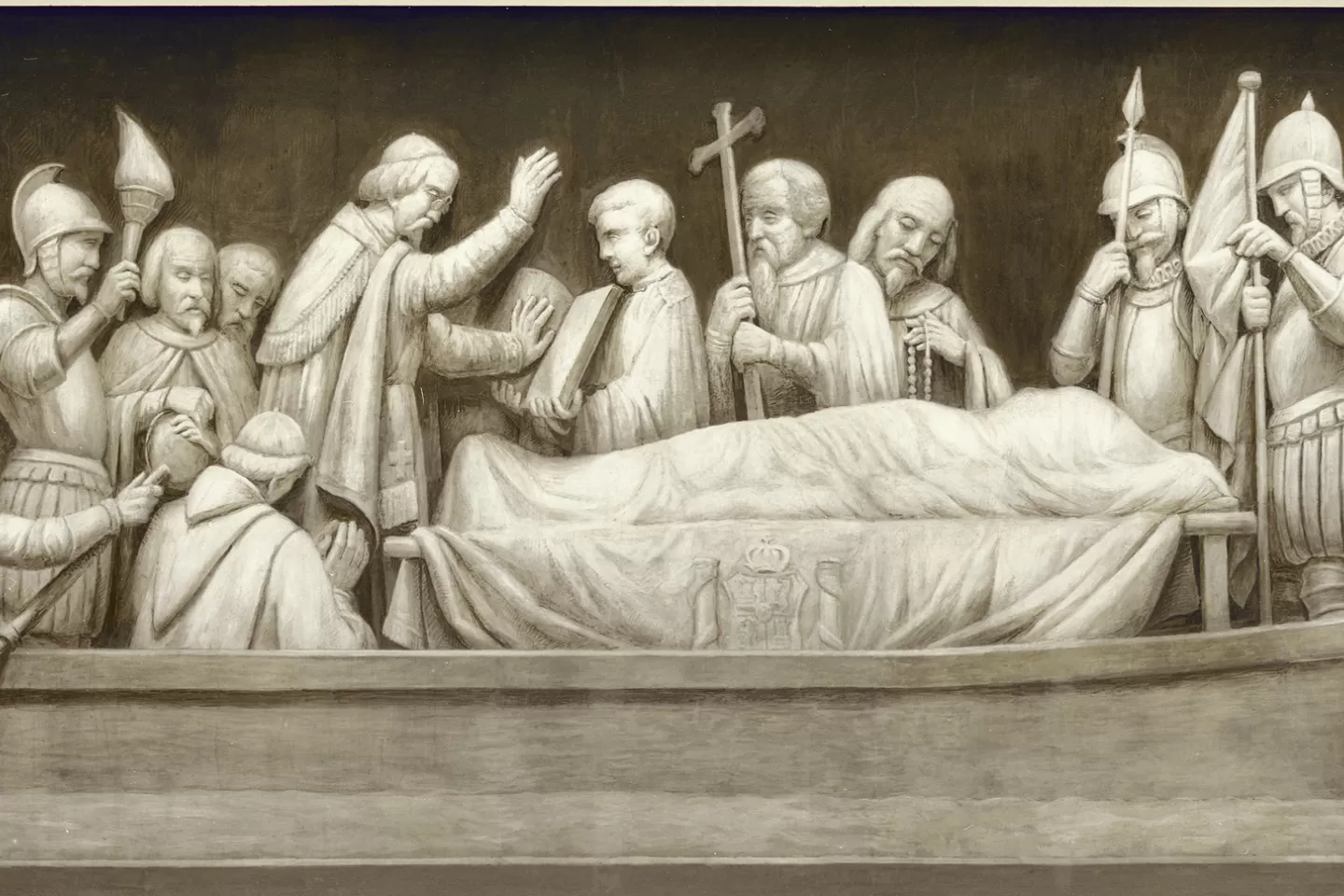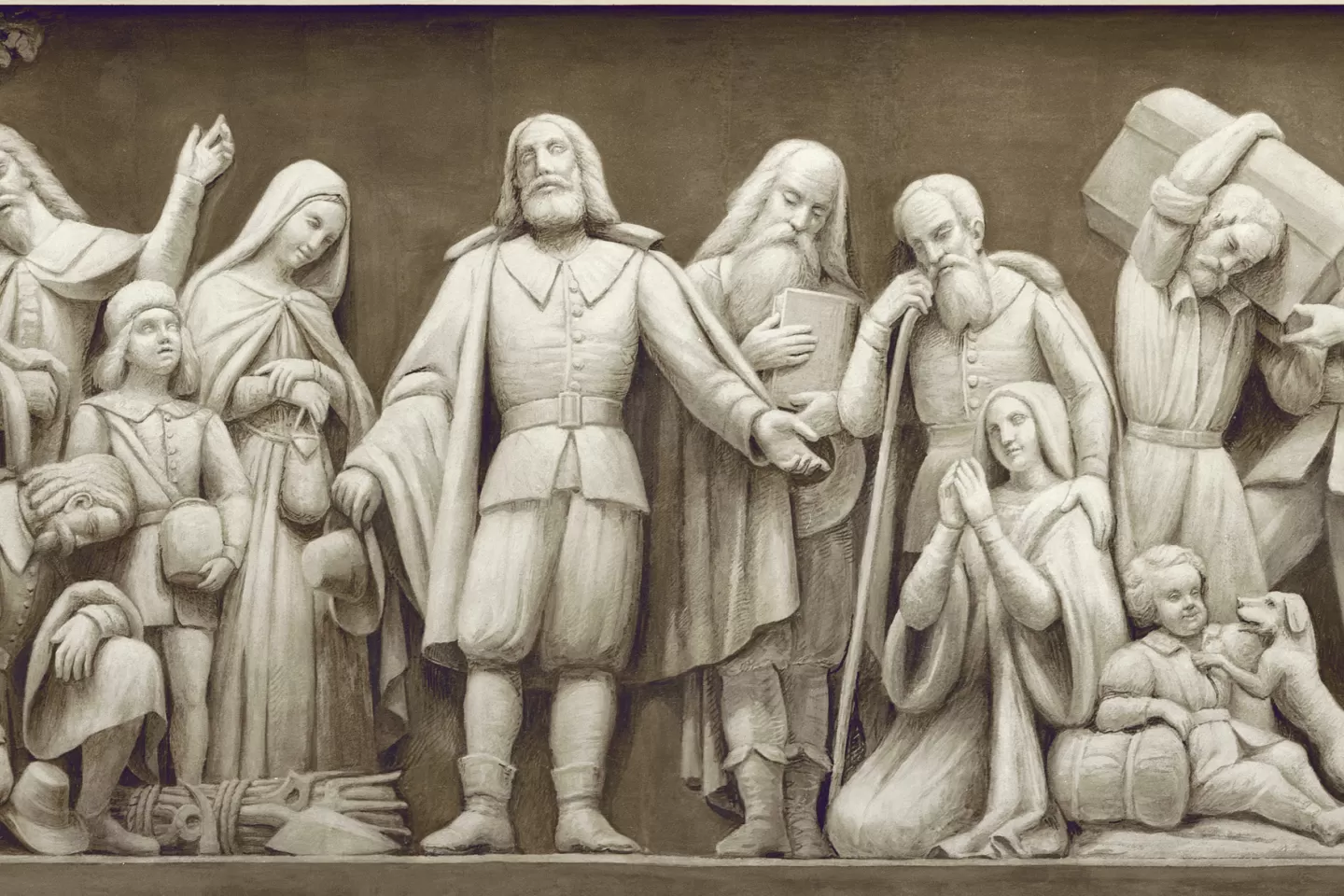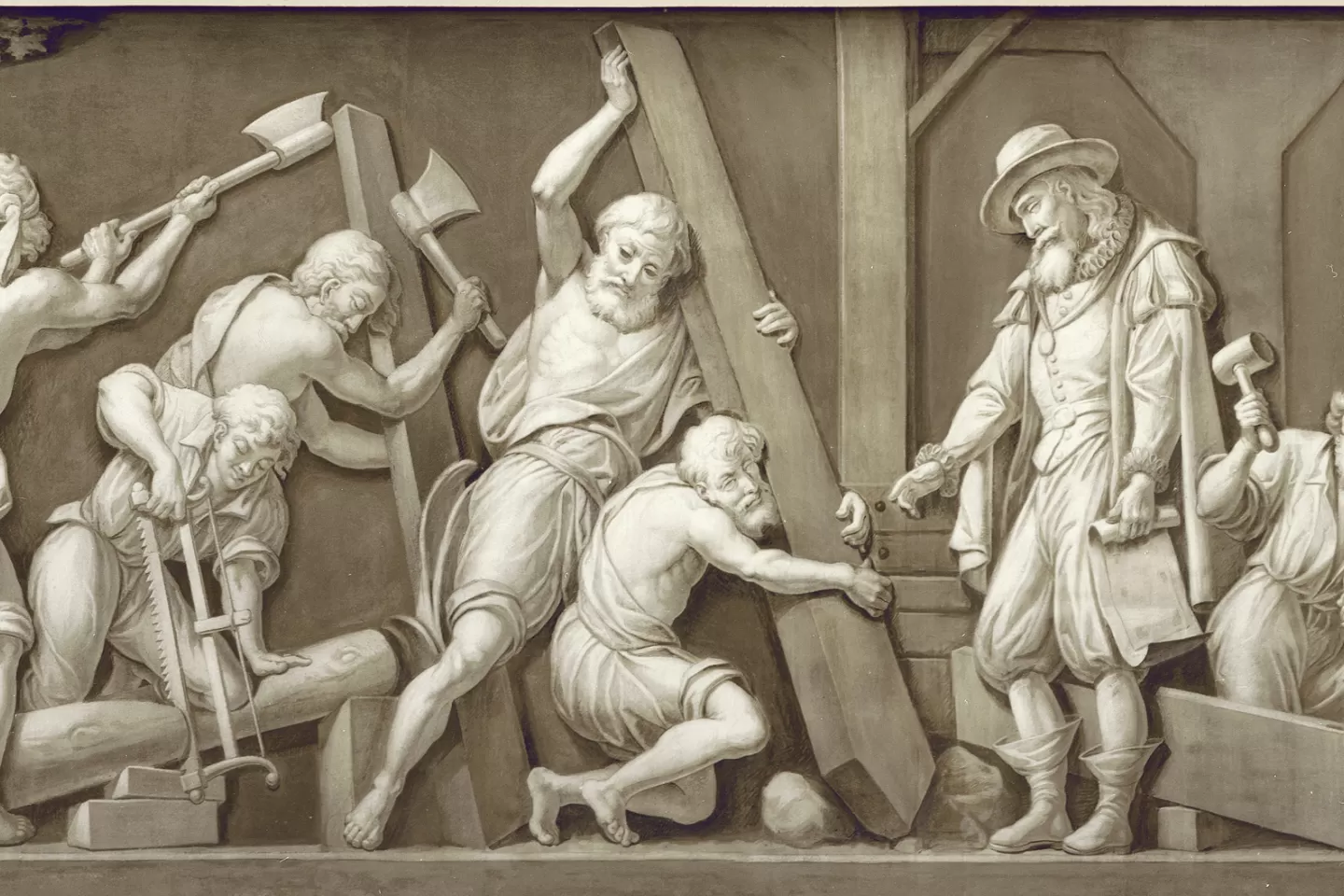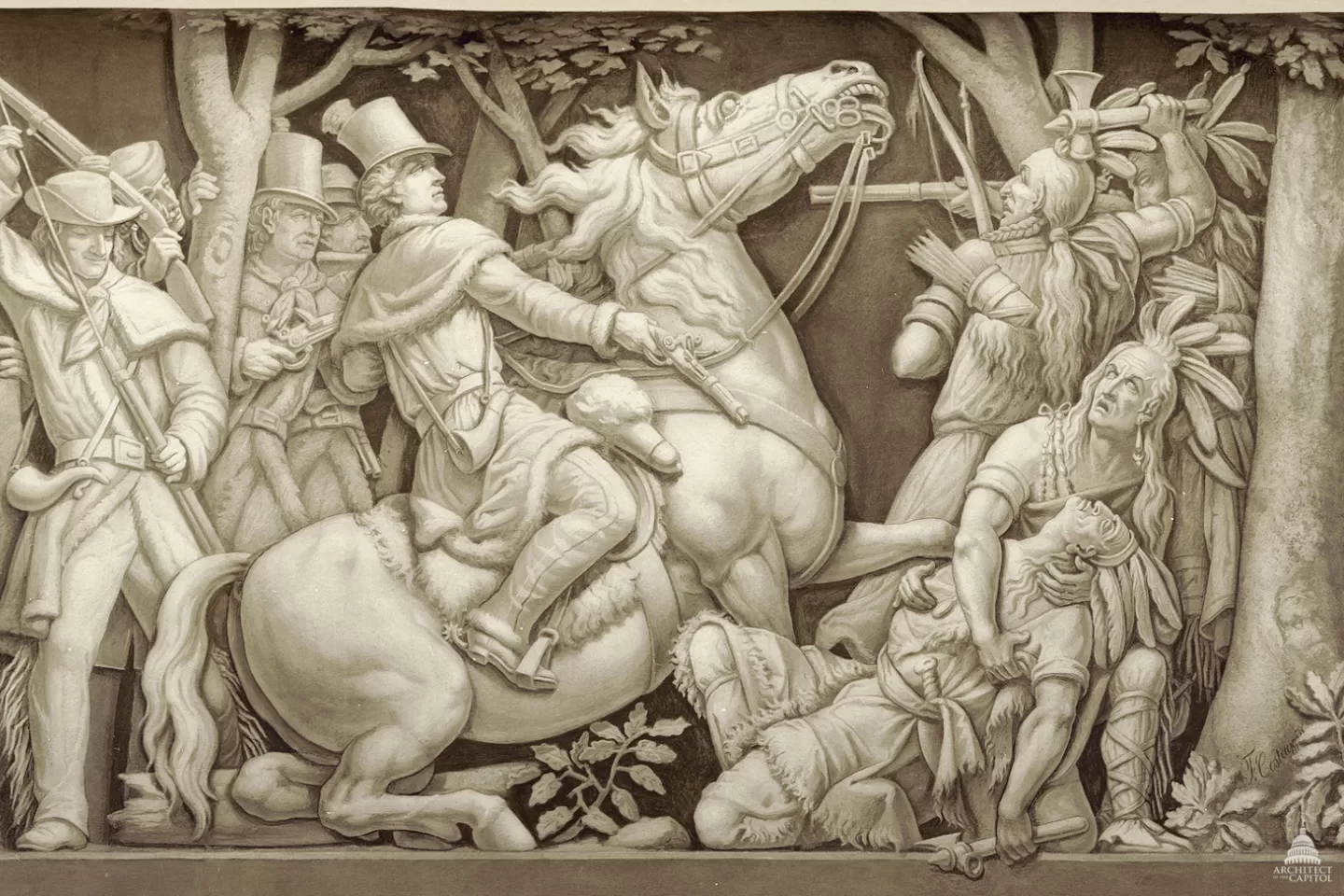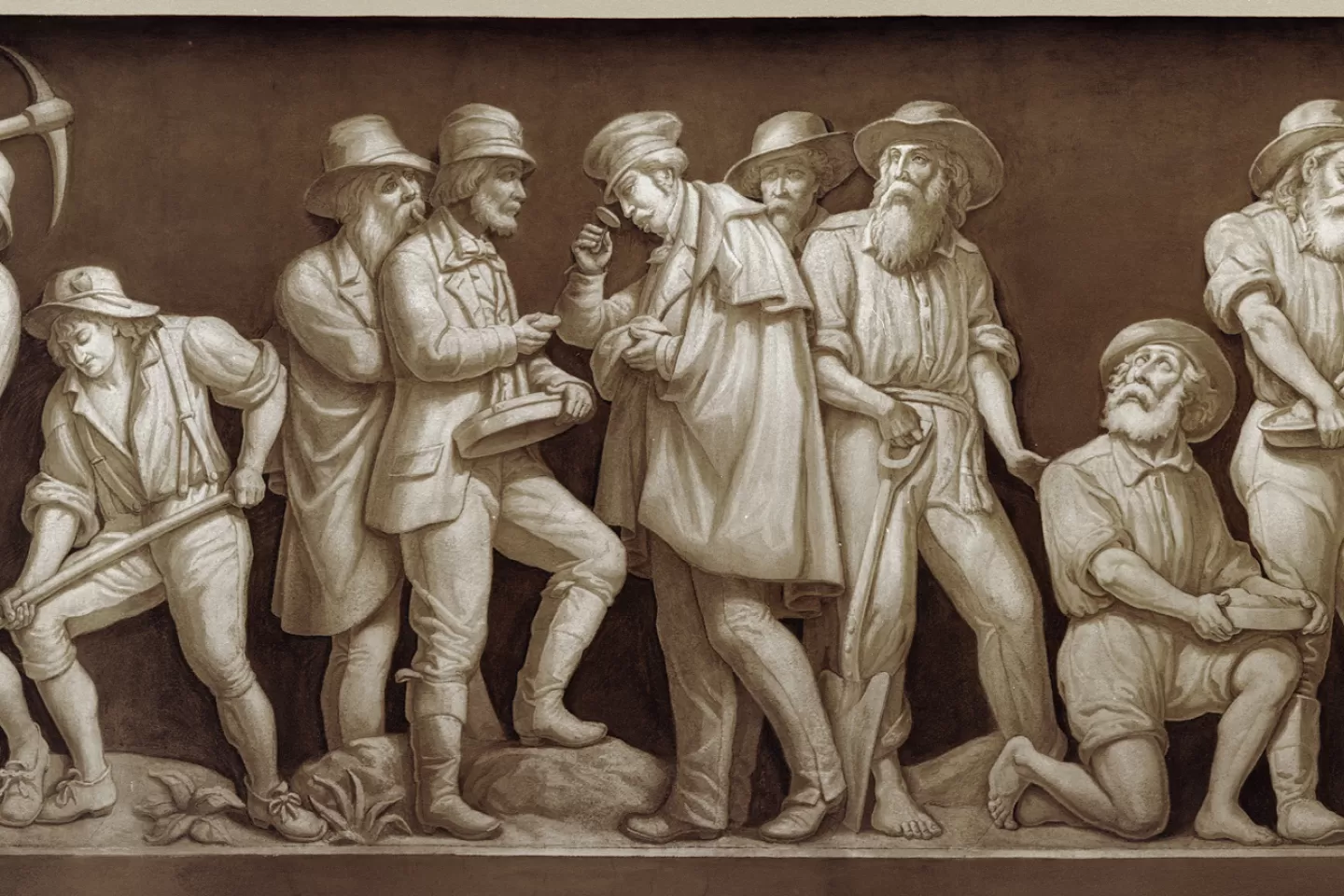Pieces
The 19 Panels
The sequence of scenes begins over the west door and moves clockwise around the Rotunda
America and History
The first panel contains the only allegorical figures in the frieze. America, wearing a liberty cap, stands in the center with her spear and shield. To her right sits an Indian maiden with a bow and arrows, representing the untamed American continent. Also at America's feet is a female figure representing History, who holds a stone tablet to record events as they occur. An American eagle perches on a fasces (a bundle of rods symbolizing the authority of government).
Landing of Columbus
Christopher Columbus disembarks from the Santa Maria on a plank, greeted by Native Americans. This is the first of four scenes of Spanish conquest. Brumidi's central figure seems to have been inspired by a statue of Columbus by Luigi Persico, which was then at the east central steps of the Capitol. (1492)
Cortez and Montezuma at Mexican Temple
The Spaniard Hernando Cortez, conqueror of Mexico, enters the Aztec temple in 1519. He is welcomed by Emperor Montezuma II, who thought Cortez was a god. The calendar stone and idols are based on sketches that artist Constantino Brumidi made in Mexico City. (1520)
William Penn and the Indians
William Penn is shown at center with the Delaware Indians at the time of the Treaty of Shackamaxon. This treaty formalized the purchase of land in Pennsylvania and cemented an amicable relationship between the Quakers and the Indians for almost a hundred years. This scene was that last one on which Constantino Brumidi worked.
Battle of Lexington
British troops fire on colonists, who had gathered at Lexington to stop them from going on to Concord to destroy a colonial supply depot. Major Pitcairn, the British officer on horseback, had ordered the colonists to disarm and disperse. As they began to do so, a single shot was fired, which led to an exchange of fire between a British platoon and the colonial militia. Eight militiamen were killed and ten wounded before Pitcairn regained control of his troops. Thus the American Revolution started, with "the shot heard round the world." (1775)
Death of Tecumseh
Tecumseh, a brilliant Indian chief, warrior and orator, is shown being fatally shot by Colonel Johnson at the Battle of the Thames in Upper Canada during the War of 1812. Tecumseh and his followers joined forces with the British to resist the encroachment of settlers on Indian territory. With Tecumseh's death, however, the momentum and power of the Indian confederacy was broken. (1813)
American Army Entering the City of Mexico
General Winfield Scott is shown during the Mexican War, entering the capital. Peace came in 1848 with the Treaty of Guadalupe Hidalgo, which fixed the Mexican-American border at the Rio Grande River and recognized the accession of Texas. The treaty also extended the boundaries of the United States to the Pacific. (1847)
Discovery of Gold in California
The discovery of gold at Sutter's Mill set off the California gold rush of 1849. In this scene prospectors dig for gold with picks and shovels and pan for the precious metal. In the center three well-dressed men, possibly Sutter and two friends, carefully examine the contents of a prospector's pan.
This was the last scene designed by Constantino Brumidi and painted by Filippo Costaggini.
Peace at the End of the Civil War
A Confederate soldier and a Union soldier shake hands, marking the reunion of the country after the devastation of the Civil War. A cotton plant and a northern pine tree symbolize the South and the North, respectively. This is the first of Allyn Cox's three scenes. (1865)
Naval Gun Crew in the Spanish-American War
A gun crew prepares to fire a Naval gun in one of the two great naval battles of the Spanish-American War. In the course of helping Cuba win independence from Spain the United States became prominent in world affairs by acquiring a colonial empire (Puerto Rico and Guam) and establishing naval prominence in both oceans. (1898)
The Birth of Aviation
The first flight at Kitty Hawk (December 17, 1903) is depicted, with Orville Wright in the Flyer, which has just left the ground, and Wilbur running alongside to steady the wing. In the background stand Leonardo da Vinci, Samuel Pierpont Langley, and Octave Chanute; each holds a model of his earlier design for a flying machine. An eagle with an olive branch in its talons emphasizes this flight as a great American achievement and closes this last scene. (1903)
